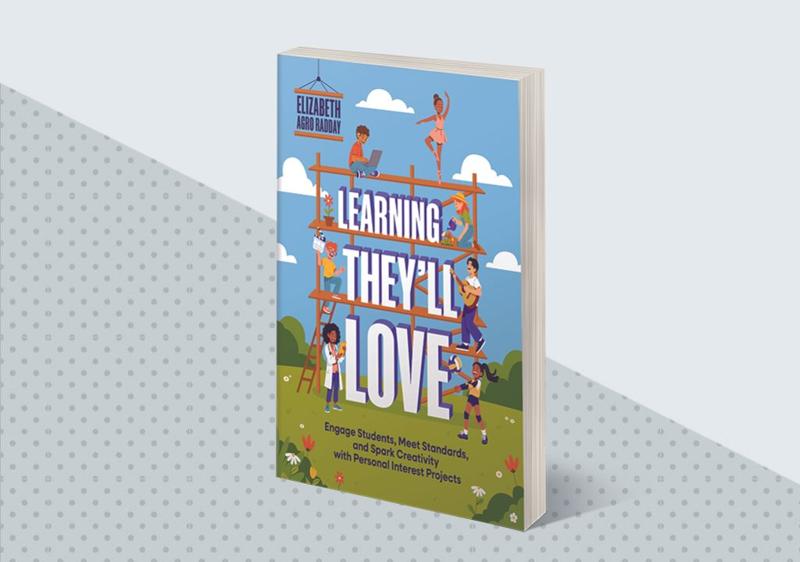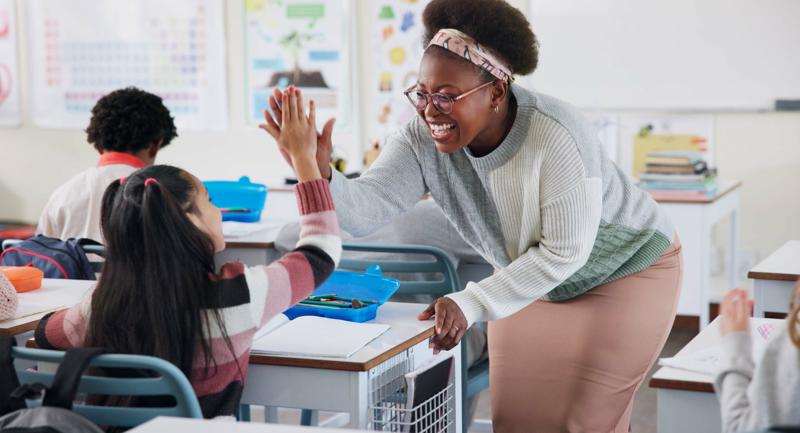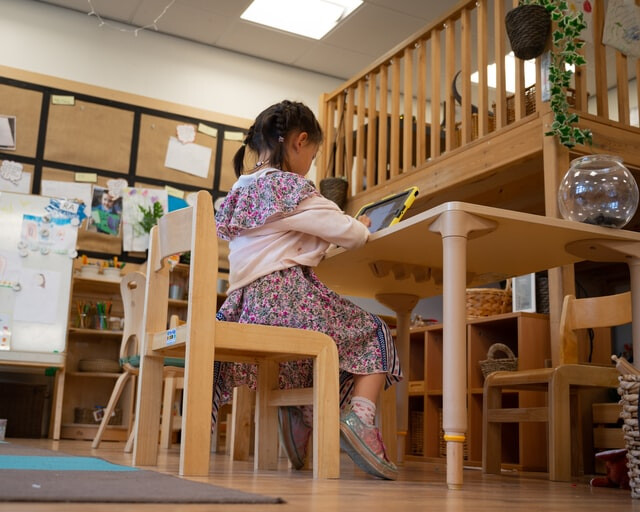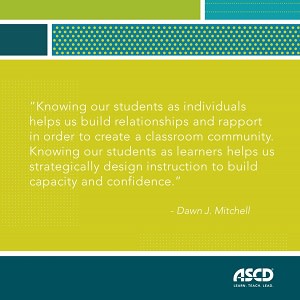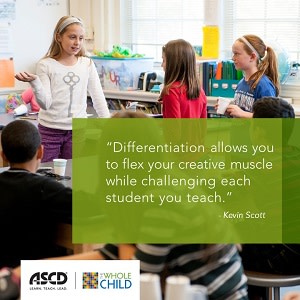A time-old question for teachers: How can I make my students fall in love with learning? In Learning They'll Love: Engage Students, Meet Standards, and Spark Creativity with Personal Interest Projects, award-winning educator Elizabeth Agro Radday explains how Personal Interest Projects can be the answer to this question. In this exclusive excerpt, she explains the concept of a Personal Interest Project and why they are so crucial in today’s schools to guide students to be curious, creative, and engaged in their learning.
The last really significant thing I learned to do was make a podcast. My colleague Matt and I were diving deeply into the topic of artificial intelligence in K–12 education and had a lot of information we thought would benefit other teachers and school leaders. We both knew people who had podcasts, so it didn’t seem like there was that high a barrier to entry.
Although Matt and I were confident we would be able to put together a podcast, we also had a lot to learn about the creative, technical, and administrative aspects of podcasting before we could launch the first episode. We listened to many episodes of our favorite podcasts to refine our ideas about how to structure ours and make it flow. We researched what sort of equipment we would need: microphones, headsets, editing software, cords, and an audio interface device. To secure some funding, we needed to learn how to pitch our podcast, and when it was time to start buying equipment, we consulted with colleagues who had experience in sound production and recording and got their recommendations. We also started a running list of topics we could use for podcast content and created a timeline and task list that would help us stay on track to release a new episode every other week. Finally, we engaged one of our colleagues to be our audio engineer, tapped another to be our executive producer, and assembled a crew of supportive colleagues who were willing to help in a variety of ways.
With this foundation established, Matt and I wrote our first script and recorded our first episode. Our sound engineer edited it, and then we released it out to the world. We asked friends and family for feedback, obsessively watched our ratings and statistics on the different podcast platforms, made some adjustments based on that feedback, and continued forward. A few months in, we decided to go to a weekly format, and we continue to gain listeners (who are not family)! Have we “finished” learning how to be podcasters? No, but we have come a long way and continue to measure our success using real-world data and metrics: feedback from listeners, numbers of plays each week, and requests for presentations on our work.
PIPs are so much more than what people think of when they hear 'school project.'
Some of what Matt and I learned about podcasting came from online research, but we learned more by talking to mentors—people who are producing podcasts, people with sound production experience, people who know marketing and how to craft an elevator pitch. We watched videos of other podcasters to see their setup. We made some mistakes and had to buy different microphones. Sometimes we forgot to mute our computer alerts, and the “dings” of incoming emails ruined a stretch of audio. While we’re not done learning about podcasting, we can say we’ve completed the journey to becoming podcasters and having a podcast. The proof is in the product: 70 episodes and counting.
Here is what Matt and I did not do as part of this learning journey. We didn’t read a single textbook. We didn’t take any quizzes or tests or write essays. We didn’t follow a learning progression created by anyone else. We identified our learning needs, and we set our own deadlines, working backwards from the target date we had chosen. We broke the task into manageable steps, determined our timeline, and set smaller goals and deadlines.
Learning to podcast was a personal interest project (PIP), one of several I have taken on in the past few years. The term may be new, but we’ve all been doing PIPs for most of our lives: learning to make pottery, teaching ourselves the skills of home renovation, picking up a new language, or learning to decorate cakes or repair engines or build computers or master a new cuisine. Anytime we explore a new topic and embark on learning something on our own, it’s an example of a PIP: a multi-component project undertaken out of sincere interest and aimed at achieving relevant goals we set ourselves. PIPs can extend anywhere from a few days to a few months.
Beyond Posters and Dioramas
PIPs are so much more than what people think of when they hear “school project.” These projects are student-designed from the outset. Students choose their topic and set their final goal, and it’s all related to something they are authentically interested in. Students practice and develop a range of real-world skills that they need for future success, including creativity, collaboration, time management, dealing with ambiguity, research, perseverance, and critical thinking. PIPs are, at their core, student designed projects rooted in curiosity and interest that are executed by practicing essential life skills.
Your role as a teacher will go from carrying out daily lesson plans and endless grading to guiding and coaching students individually.
Why PIPs Now?
You might be wondering why you should undertake yet another new idea in education. There’s already so much going on in classrooms, and teachers are already exhausted with all they have to do each day. Asking students to do another project might seem overwhelming. But let me assure you, the rewards are worth the work. Your role as a teacher will go from carrying out daily lesson plans and endless grading to guiding and coaching students individually. This is a refreshing shift. Students are designing the projects and doing the learning. They’re taking on more responsibility. Additionally, students enjoy PIPs. Instead of being cajoled through endless assignments, they are authentically engaged in work that matters to them. And as a teacher, you will feel good that you are allowing students to practice skills they will need beyond school.
Education is at a crossroads. The rapid rise of artificial intelligence has fundamentally changed the academic landscape, and many traditional assignments can now be completed by AI tools with minimal student effort. Teachers and parents fear that students aren’t being taught critical thinking and aren’t being asked to apply it in the classroom. This shift forces us to ask what is the true purpose of school? If learning isn’t authentic, connected, and meaningful, students will disengage; disengaged students don’t learn. PIPs offer a powerful solution by bridging the gap between school and the real world. They empower students to pursue work that is driven by curiosity, creativity, and relevance, while building skills (problem solving, communication, self-direction, and resilience) that will serve them in any future they choose. At a time when attention is scarce and motivation is low, PIPs reignite a sense of purpose and possibility in learning.
Learning They’ll Love
Comprehensive guidance and more than 30 practical, classroom-tested tools to support the seamless implementation of personal interest projects across grades and content areas.
